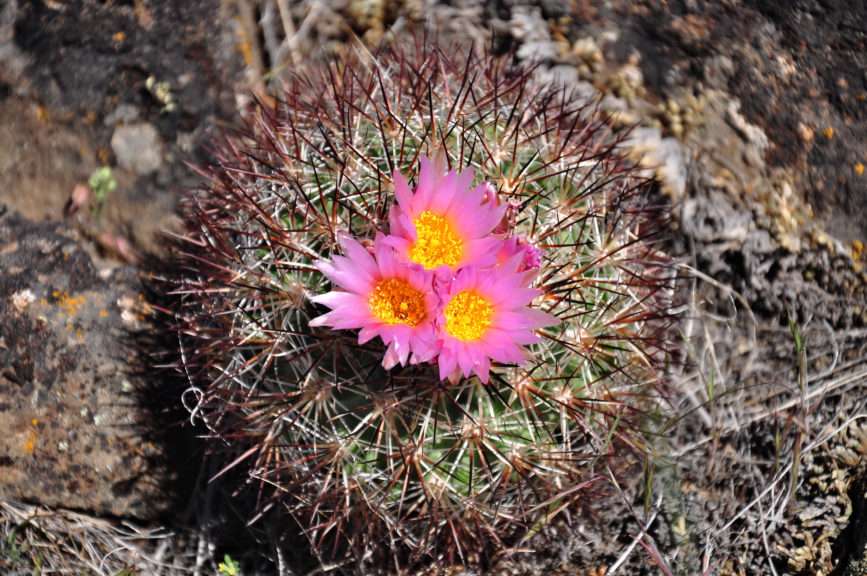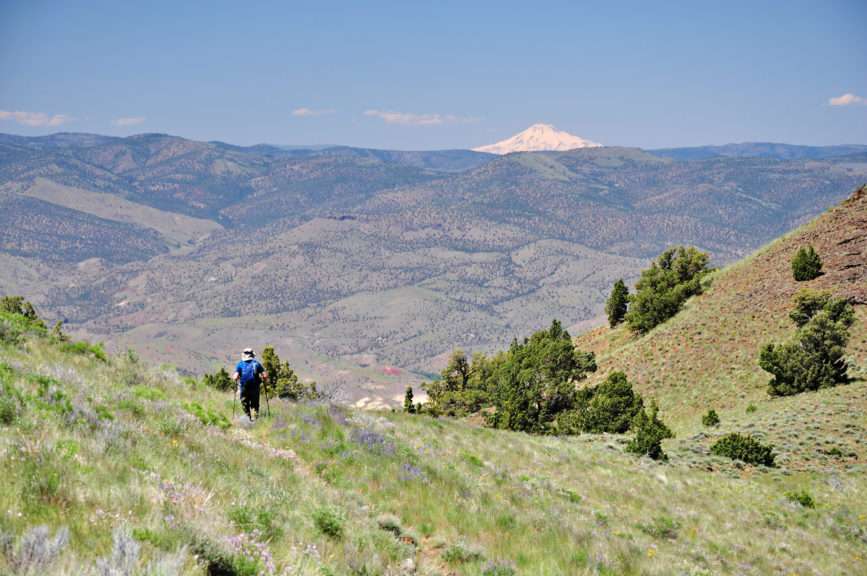By Cheryl Hill, Board Member, Trailkeepers of Oregon When winter snow has buried your favorite trails at high elevations, the Riverside National Recreation Trail #723 along the Clackamas River offers a great alternative. At 1,500 feet elevation, the…
By Cheryl Hill, Board Member, Trailkeepers of Oregon
If you find yourself visiting the Painted Hills unit of the John Day Fossil Beds National Monument and you want a longer hike than those short trails provide, Sutton Mountain may be for you. This seven and one-half mile out-and-back hike gains sixteen hundred feet in elevation and includes wildflowers, views, and solitude.

Hedgehog cactus blooming on the summit of Sutton Mountain. (Photo by Cheryl Hill)
Sutton Mountain sits within a 28,872-acre wilderness study area on Bureau of Land Management (BLM) land north of the town of Mitchell, south of the John Day River, and east of the Painted Hills. According to the Oregon Natural Desert Association (ONDA), this area is home to dozens of bird species, elk, deer, cougar, and coyote. In late spring and early summer you will also see numerous wildflowers. The ONDA has proposed converting the entire Sutton Mountain area into a designated wilderness.
From the trailhead the hike follows an old road as it winds its way up the mountain through sagebrush-juniper woodland. This road has been abandoned for so long, however, that most of the time it doesn’t feel like a road hike. As you hike, watch for lupine, several types of paintbrush, wild onion, agoseris (a dandelion-like member of the aster family), desert parsley, bitterroot, and more. Also listen for the distinctive song of the western meadowlark, Oregon’s state bird.
As you gain elevation the views get better and better and you can see more of the rolling juniper-dotted hills around you. Because the old road doesn’t go directly to the summit, the last short stretch is a cross-country trek uphill through the grass, but it’s not strenuous.

View of Mt. Jefferson from the trail on Sutton Mountain. (Photo by Cheryl Hill)
Once you reach the top, find a spot to settle in and enjoy your reward. On a clear day, the 360-degree views from the summit are fabulous and include the snowy peaks of Mt. Hood and Mt. Jefferson. If your timing is right, you’ll also see the vivid pink blooms of the hedgehog cactus, a plant that is not found in many places in Oregon.
There is almost no shade on this hike (and no water sources), so this trail is best avoided during hot summer days. The summit is exposed and can be windy, so prepare accordingly.
Wilderness Study Areas
What is a Wilderness Study Area (WSA)? According to the BLM, an area can be designated as a WSA if it’s a roadless area of at least five thousand acres of public lands, generally appears to have been affected primarily by the forces of nature, and provides opportunities for solitude or primitive and unconfined types of recreation. The BLM has designated eighty-nine Wilderness Study Areas in Oregon, more than in any other state.
Cheryl Hill: Cheryl.hill@trailkeepersoforegon.org
